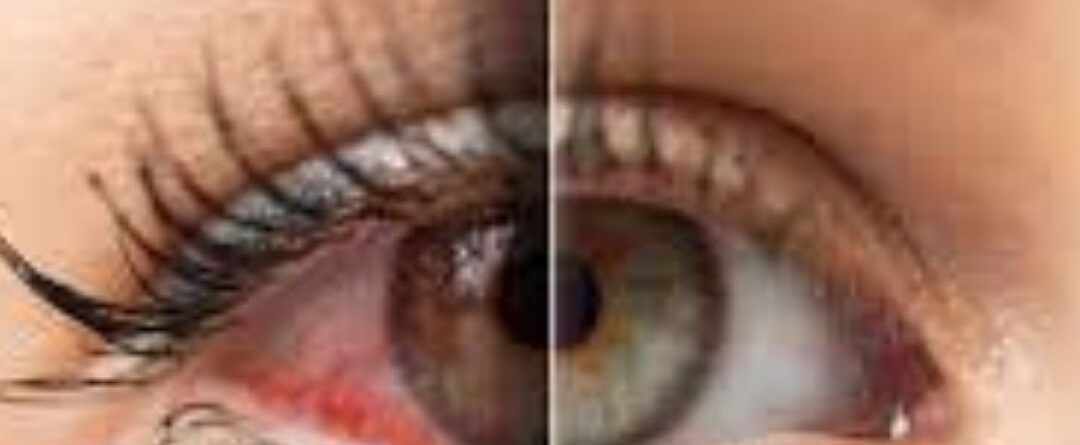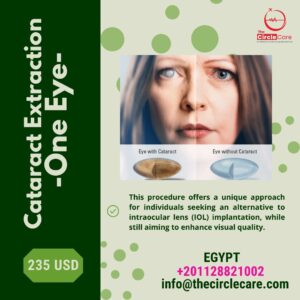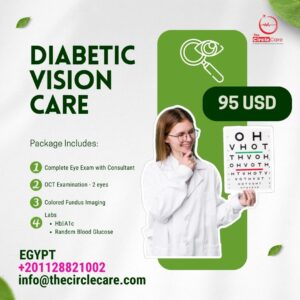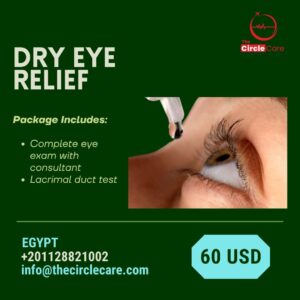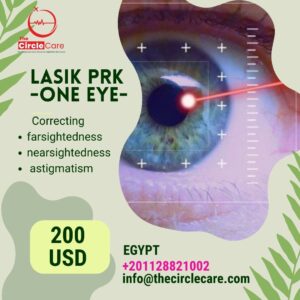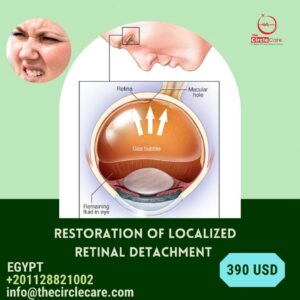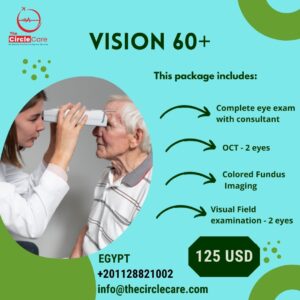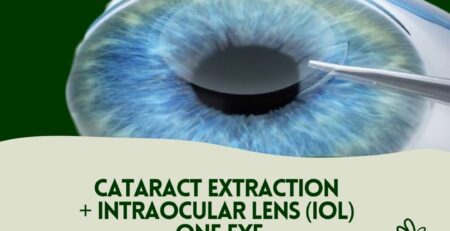[vc_row][vc_column][vc_column_text]
Here are the five most important eye conditions affecting residents of the United Arab Emirates and what can be done to treat and prevent them
First eye condition – ALLERGIC CONJUNCTIVITIS
What is it?
Thanks to the dusty climate, allergic conjunctivitis is one of the biggest eye complaints in the UAE. If the conjunctiva, a thin layer of cells covering the white part of the eye, becomes irritated by an allergen, it can become inflamed. In other parts of the world, allergic conjunctivitis is usually seasonal as sufferers react to pollen, but here it can occur all year round.
Dr Chris Canning, medical director at Moorfields Eye Hospital in Dubai, explains, “It’s a typical syndrome of this climate partly caused by temperature, partly by dust and partly by the amount of sunlight people are exposed to. The constant movement between air conditioning and the outdoors and the subsequent change in temperature also has an effect.”
Symptoms
- eye reddening
- sensitivity to light
- itchy and watery eyes
- blurred vision
- swollen eyelids
- burning sensation.
Treatment
For mild cases, lubricating drops will moisten the eyes and reduce symptoms because allergic conjunctivitis is often linked to dry eye syndrome where tear production is low.
Other relieving treatments include placing a cool compress on the eyelids to soothe any swelling or taking antihistamines to protect against the allergen. In more severe cases, where vision is blurred or the eyes extremely red, an ophthalmologist may prescribe a longer course of eye drops or steroids to treat the allergy. The patient may also be advised to stop wearing contact lenses as the lenses could be the irritants.
Prevention
Dr Canning advises sufferers to avoid anything that will irritate the eye such as makeup, contact lenses, or smoke. He adds, “Limit your exposure to dust and pollutants by wearing sunglasses and a cap with a brim — both cut the amount of light getting in and the amount of air blowing across the surface of the eye.”
Second eye condition – DIABETIC EYE DISEASE
What is it?
Diabetes, a chronic illness caused by too much glucose (sugar) in the blood, is one of the leading causes of blindness worldwide. The UAE has one of the highest incidences, with 25 per cent of the local population affected. While diabetes is a serious condition, it is the complications of the disease that affect the eyes and almost half of Type 2 sufferers — the most common form in the UAE and often associated with obesity — will develop diabetic eye disease.
The condition affects people who have had diabetes for some time or do not manage their blood sugar levels properly. High levels damage the body’s blood vessels leading to poor circulation and decreased oxygen delivery to tissues such as the eyes. The primary part of the eye affected is the retina — often compared to film in a camera — and if that film is faulty, then the picture will be blurred.
Symptoms
- blurred vision
- discolored spots or floaters that obscure your sight
- reduced night vision
- sudden vision loss.
Treatment:
Treating the diabetes itself and ensuring the patient is controlling the condition is the best treatment. Diabetic eye disease also puts patients at risk of developing cataracts and glaucoma so an ophthalmologist will also treat those conditions.
Prevention
Diabetes patients are 20 times more likely to experience vision problems, so preventing the condition is all about managing it.
Dr Canning says, “The better you control your blood sugar, the better you control your diabetes, and the less problems you have but that is difficult here because people tend to eat an unhealthy diet and take little exercise.”
Control methods include eating a healthy diet, exercising regularly, not smoking, monitoring blood sugar levels and taking all prescribed medicines as instructed.
There is also a genetic link with diabetes so if your father or mother has the condition, book yourself in for a checkup. Sufferers should then have an annual eye check to detect any signs of diabetic eye disease.
Third eye condition – CATARACTS
What is it?
Cataracts are cloudy patches in the lens of the eye and can affect one or both eyes. The lens should be clear to allow light to pass through to the back of the eye to help you see sharp images but if the lens gets cloudy, your vision gets cloudy. Although the primary cause is age — the World Health Organisation says the prevalence of the condition affects 2,500 per 100,000 over the age of 65 — the disease occurs earlier in the UAE.Dr Canning says, “We see a lot of 50-year-olds with cataracts in this population, partly because of the climate — it’s a very harsh climate for the eye — and partly because the cataract sufferers we’re treating now were born during the pre-oil era. They grew up in a country that was not as rich, where the diet was not good and the risk of disease
much higher.”
Symptoms
Cataracts develop slowly, over time, so sufferers may not notice at first. Eventually vision goes cloudy and patients can complain of being dazzled by light while driving at night. Cataracts mostly affect distance vision as reading vision is preserved until quite late in the condition’s development.
Treatment
Keyhole surgery removes the cloudy lens — an extremely common eye operation that takes less than 15 minutes and is performed under local anaesthetic. An artificial plastic lens is injected in its place.
Prevention
Risk factors include smoking, overexposure to sunlight, diabetes and poor diet, so while you cannot prevent cataracts, you can reduce your risk. Stop smoking, wear wraparound sunglasses and a hat with a brim, eat a healthy diet and if you suffer from diabetes, have regular
eye check-ups.
Fourth eye condition – GLAUCOMA
What is it?
Glaucoma is the name for a group of eye conditions that can cause blindness. Three per cent of the population will be affected by glaucoma and, of that number, half won’t know they have it. It is one of the most serious eye diseases, as left untreated it can cause blindness. The condition occurs when the pressure in the eye is higher than the nerves can tolerate. The pressure squeezes the nerves until they die and the nerves that die first are the ones that deal with the vision on the eye’s periphery.
Symptoms
There are four types of glaucoma, and most are painless and show no symptoms. Because the peripheral vision is damaged first, sufferers usually have no idea they are affected and, sadly, by the time they realize the condition is very advanced. Any damaged sight cannot be reversed, hence the condition’s tag ‘the silent thief of sight’. In acute glaucoma, where symptoms develop quickly, sufferers experience severe pain, redness of the eye, headaches and misty vision.
Treatment
An eye doctor will use a range of methods to reduce the pressure, including eye drops, medication, laser treatment and surgery. However, reducing the pressure may not stop the disease from progressing.
Prevention
If you have a first-degree relative who has suffered glaucoma, your risk of contracting it increases to ten per cent. You are also more at risk as you age, are shortsighted or have diabetes, so regular eye checkups are important. Dr Canning advises a full eye check-up every five years over the age of 40
Fifth eye condition – EYE INJURY
What is it?
Your eye is protected by the eye socket and the eyelids, but injuries are still commonplace. Most are caused by scratches from a foreign body such as dust or grit, but in the UAE one of the biggest hazards is sand.
Dr Huda Radhi, specialist ophthalmologist at Atlanta Vision Clinic, Dubai, says, “We see many patients with sand in their eyes and it causes a lot of damage. If you rub your eye, the sand can remove the skin causing a corneal abrasion.”
Scratches can also be caused by something as simple as the stem of a houseplant or a baby poking a finger in your eye. Other household hazards include chemicals from cleaning products, or tiny objects flying up while you are hammering or mowing the lawn. And if you enjoy playing sport, watch out — a squash ball hitting you in the eye can blind you.
Symptoms
If you have injured the cornea by scratching it, you may experience blurred vision, pain and sensitivity to light. Anything stuck inside the eye can cause pain, swelling and red, watery eyes.
Treatment
Foreign bodies such as sand can be removed in hospital or by rinsing the eye. You may be prescribed eye drops to prevent infection and superficial injuries should heal within 72 hours. If you’ve suffered a big trauma, it could lead to problems further down the line such as glaucoma or cataracts. Dr Canning explains, “Damaging the inside of the eye in a subtle way could cause the pressure to go wrong or the lens to go cloudy years later, so with significant eye injuries we recommend five yearly checks.”
Prevention
Wear goggles if you’re doing DIY or gardening and don’t rub your eyes when cleaning.
Swap glasses for contact lenses when playing sport; squash players can get special protective glasses designed to transmit the force of the ball to the bone around your eye.
[/vc_column_text][/vc_column][/vc_row][vc_row][vc_column]
-
EYE VISION LASIK LASER رؤية الليزك بالليزر
Cataract Extraction (One Eye) ازالة مياه بيضاء
$235There is no AI review summary. -
EYE VISION LASIK LASER رؤية الليزك بالليزر
Corneal Transplant (without cornea price) ترقيع قرنية (زرع القرنية بدون سعر القرنية)
$470There is no AI review summary. -
EYE VISION LASIK LASER رؤية الليزك بالليزر
Diabetic Vision Care رعاية الرؤية لمرضى السكري
$95There is no AI review summary. -
EYE VISION LASIK LASER رؤية الليزك بالليزر
Dry Eye Relief راحة العين الجافة
$60There is no AI review summary. -
EYE VISION LASIK LASER رؤية الليزك بالليزر
Femto Lasik (One Eye) عملية فيمتوليزك (عين واحدة)
$400There is no AI review summary. -
EYE VISION LASIK LASER رؤية الليزك بالليزر
Lacrimal Drainage with General Anesthesia (One Eye) تسليك مجري الدمع بمخدر عام (عين واحده)
$200There is no AI review summary. -
EYE VISION LASIK LASER رؤية الليزك بالليزر
Lasik PRK (One Eye) علاج قصر او طول النظر البسيط (عين واحدة)
$200There is no AI review summary. -
EYE VISION LASIK LASER رؤية الليزك بالليزر
LocalizeCataract Extraction + Intraocular lens (IOL) (One Eye) ازالة مياه بيضاء + زرع عدسه
$315There is no AI review summary. -
EYE VISION LASIK LASER رؤية الليزك بالليزر
Localized Retinal Detachment انفصال شبكي
$390There is no AI review summary. -

